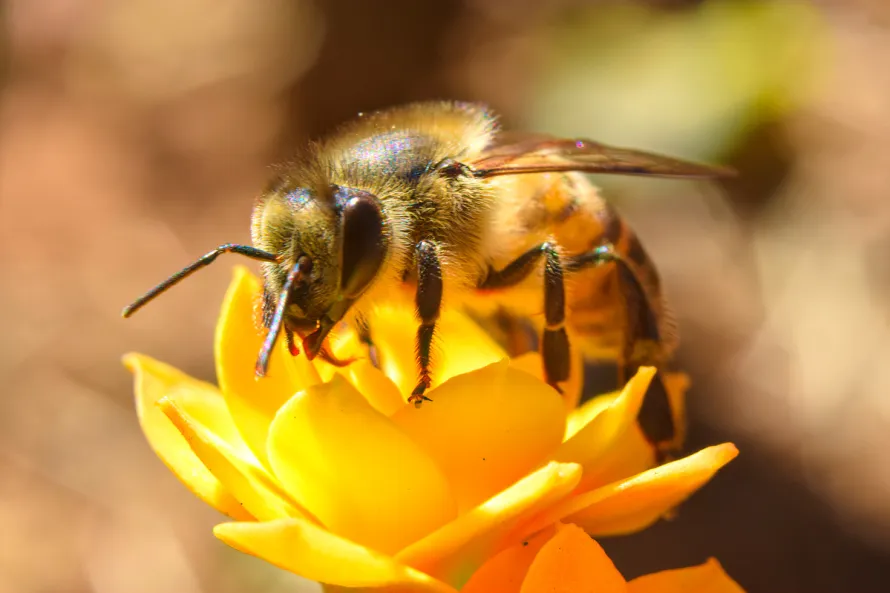Most of the time, a bee sting is not dangerous. Getting stung by a bee can be a scary and painful experience for a child, but won’t do any lasting damage (beyond, of course, a possible fear of bees).
That said, bee sting first aid is something every parent should know—not only to help the pain of a bee sting subside as soon as possible, but also so they can be on the lookout for any signs of a more severe reaction.
Basic bee sting first aid
For most children, a bee sting is unpleasant, but not life-threatening. If your child gets stung by a bee:
- Remove the stinger. Rather than trying to pull the stinger out with your fingers (which can actually inject more venom into the skin), gently scrape the edge of a credit card (or similar hard, flat, non-sharp object) along the injection site. You may have to scrape a few times before the stinger comes out.
- Wash the area. Use soap and warm water to gently and thoroughly wash the site of the sting.
- Apply a cold pack. Put a cold pack on the sting site. If the pack is still needed after 10 minutes, remove it for 10 minutes, and then put it back. Repeat for as long as needed.
- Watch. Over the next few hours and days, keep an eye on the site. Watch for signs of swelling, increased redness, or increased pain.
Signs of a severe reaction
Occasionally, a child may have a severe reaction to a bee sting. It’s very important to watch for signs of a severe reaction so that you can get the child proper medical attention as quickly as possible. Signs of a severe reaction to a bee sting include:
- Nausea, vomiting, and/or cramps
- Trouble breathing
- Swelling of the throat and lips
- Faintness, dizziness, and disorientation
- Rapid heartbeat
- Hives
- Fainting or acting faint (signs of low blood pressure)
Any of these signs after a bee sting require immediate medical attention.
How to treat a severe bee sting reaction
If your child has a severe reaction to a bee sting, call 911. Then:
- Check for available allergy medication, and administer according to the medication directions. If you have an EPI-Pen, use it by pressing the auto injector firmly against the thigh and holding it there for a few seconds. (Instructions should be on the EPI-Pen.)
- Loosen any tight clothing
- Do not give the person something to drink
- Place the person on his or her side if vomiting is occurring
- Call 911 if you haven’t already done so
- Begin CPR if their heart stops or if they stop breathing
Tips for avoiding bee stings
Even if your child doesn’t experience a severe reaction to a bee sting, getting stung is still an unpleasant (or even traumatizing) experience. Remember these simple tips from KidsHealth and the CDC to potentially help you avoid stings in the first place.
- Avoid beehives and give them a wide berth. Stay far away from hives, as bees tend to become more aggressive if they feel their home is threatened. Hives can be up in trees or on the ground.
- Wear shoes outside. Many bee stings happen as a result of stepping on a bee. Wearing shoes outside can prevent this.
- Don’t make any sudden movements. If a bee lands on you, do your best to hold still. Sudden movements will make the bee think you are getting aggressive, which could provoke it to fight back.
- Don’t wear bright colors. Bees are attracted to bright colors. If you’re really concerned about minimizing your chances of being stung, muted tones are your best bet.
- Be careful around flowering plants or ripe fruit. Bees are more likely to be near flowers or trees with ripe fruit. If either are close by, be on the lookout for bees.
- Avoid scented soaps or lotions. Anything with a strong, sweet scent is more likely to attract a bee. If you’re very concerned about bees, avoid using fragranced soap, lotion, or even sunscreen.
As a parent, the best thing you can do is to be prepared for any situation. While none of us like to think about any harm coming to our kids, we should always be ready to respond quickly and decisively. Knowing First Aid basics, along with CPR, can equip you to safely handle any situation you and your kids may encounter.



